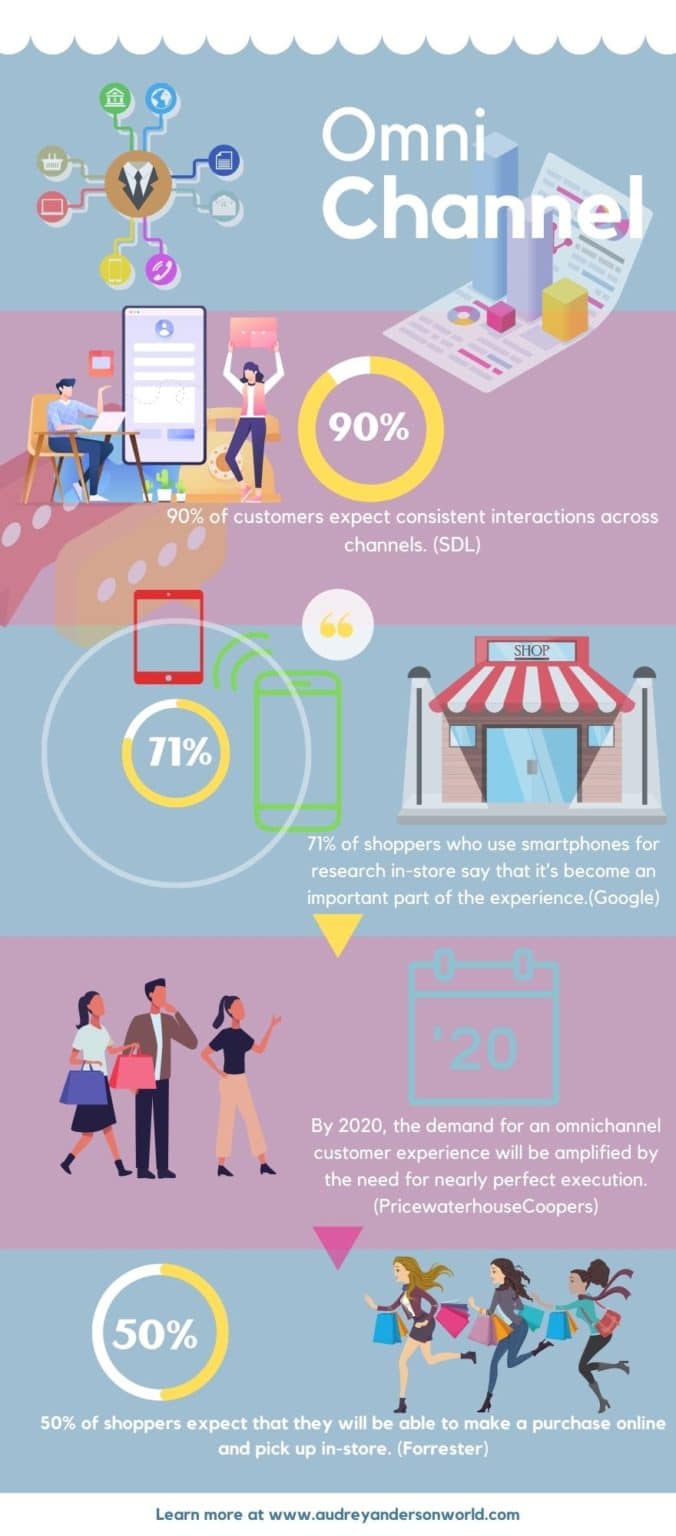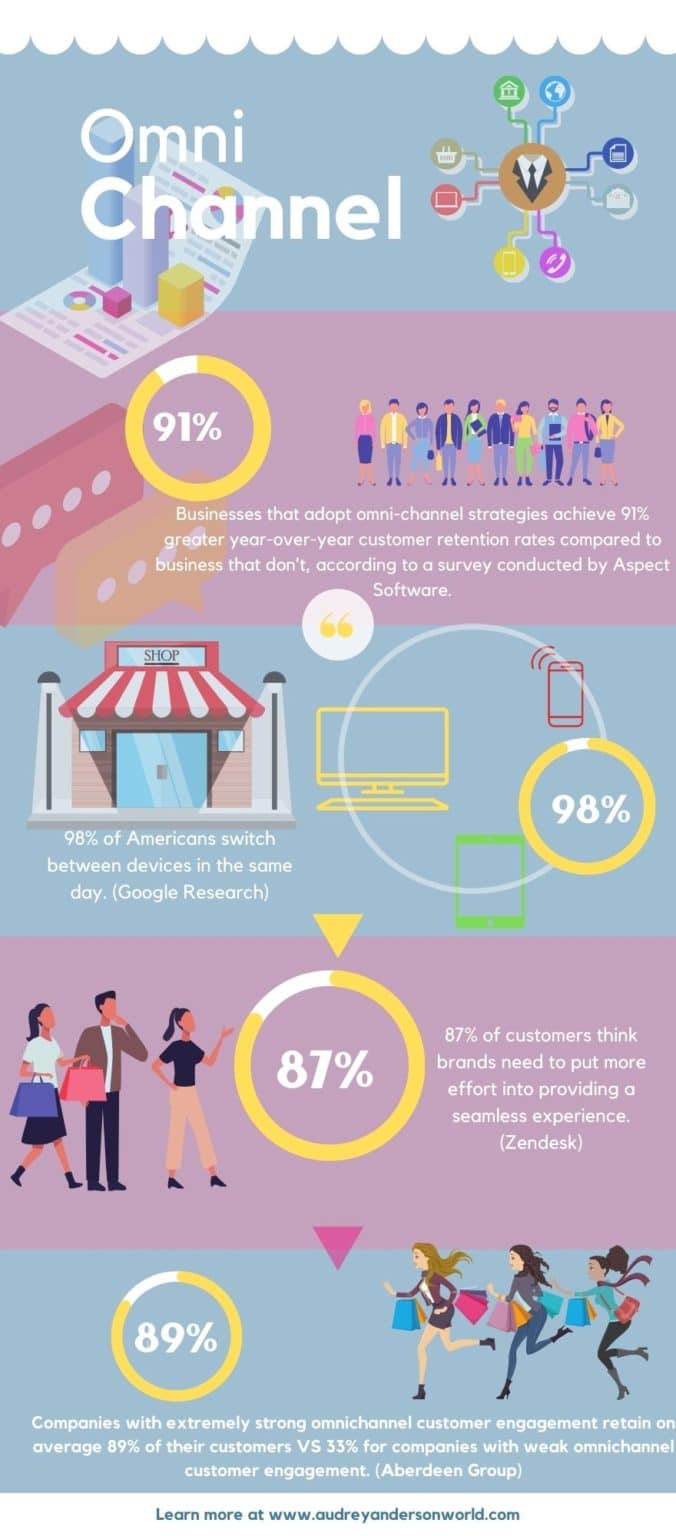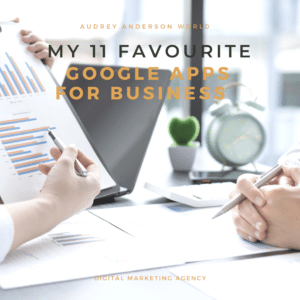
Lash Serums That Work My Favorite – 2023 Review
Lash Serums That Work and are my favourite – A Review We may get paid a commission if you buy something after clicking on one of our affiliate links here


“Omnis” is Latin for “every/all,” Referring to the convergence of all physical (offline) and digital (online) platforms to provide a single customer journey. Frost & Sullivan describe Omni-Channel as “seamless and effortless, high-quality customer interactions occurring within and between communication channels.”
Corporations drive to unify networks spans all business segments and have a long history. Single-source publishing and responsive web design, on the other hand, have typically been based on internal efficiencies, formatting consistency, and easy re-duplication across networks. As channels proliferated, also did the possibility of a disconnected experience throughout the customer journey. When your brand customer was found switching or interacting with multiple channels.
Additional to conventional physical and human interaction platforms, the customer journey is now driven by mobile devices, the mobile network, mobile applications, contextual support, augmented reality, virtual reality, and chatbots are used.
It results in a dynamic matrix of imaginative ways for a customer to interact with your organisation and contribute to solving their problems.
Until the early 1990s, retailing was either a physical brick and mortar store or catalogue sales in which an order was made by mail or phone. Mail-order sales date back to 1861, when British merchant Pryce Pryce-Jones founded his modern mail order, selling Welsh flannel.
Catalogue sales of various general goods began in the late 1800s, with Sears & Roebuck publishing its first catalogue in 1896. L.L. Bean began its catalogue business in the United States in the early 1900s, and boy did I love pouring over them.
Tracing the roots of omnichannel back to 2003 when Best Buy used customer-centricity in competing with Walmart’s electronic store. The company developed a cutting edge strategy that focused on the consumer both in-store and online while also offering post-sales support.
The term “omnichannel” was coined for describing a form of “assembled commerce,” It has now been adapted to the ecommerce, financial, healthcare, retail and government services industries.
The emergence of innovative technology, social media, and mobile devices has dramatically changed the retail landscape and has provided retailers with opportunities to redesign their marketing and product strategies.
Customers are now searching for information in a physical store while still receiving information about offers and potentially lower prices on their mobile devices. I do this all the time when I am making a purchase. I love to check other prices before I hand my CC over. Instead of each channel carrying individual units, omnichannel enables companies to assign inventory availability and visibility through multiple locations.
A variety of features, such as size charts, simple return policies, and same-day delivery, improving ecommerce and being customer orientated, encouraging growth in omnichannel shopping.
Amazon.com was created, as was the eCommerce distribution platform. Mobile commerce debuted in 1997, and multi-channel retailing took off immediately, with Amazon aggressive and comprehensive approach to its eCommerce platform.

Omnichannel e-commerce is a distribution strategy employing various platforms and providing consumers with a single seamless experience across all channels, whether in-store kiosks or other digital channels.
Omnichannel e-commerce is now providing consumers with a comprehensive e-commerce experience regardless of the digital device or platform they are using. This is important since research indicates that 73% of online shoppers are now using multiple platforms while shopping online. Just think about how you are shopping.
An omnichannel e-commerce strategy anticipates that customers journey will begin their online shopping journey on one platform and progress to another. Omnichannel completes and is driven by optimising a multi-channel approach for today’s online consumers.
In a multi-channel environment, the customer can access various communication options that might not necessarily be synchronised or connected.
During an omnichannel experience, several channels are used, but the channels are interconnected so that your buyer can move seamlessly between them.
All Omni-Channel Experiences can make use of multiple channels, but not all Multi-Channel Experiences. I’ll keep that in mind. You should commit to providing excellent mobile ads, engaging social media campaigns, and a well-designed website.
However, if they are not functioning cohesively together, it is not omnichannel. Most companies today invest in a multi-channel experience. Most SME ( Small to Medium Enterprises) will have a website, blog, LinkedIn, Facebook, and Twitter. Using each of these platforms by engaging and connecting with customers with the ultimate goal services of selling products
However, in most cases, the customer will find the experience lacking, and the message across all these channels will be inconsistent.
Multichannel is a marketing method where companies use multiple communication options (e.g., email, mobile, and social media) in providing a holistic brand experience. Most brands are starting to dedicate time and have begun embracing the omnichannel experience.
If you’re wondering if you’re ready to shift your business to an omnichannel-like experience, you are astute and on the right track.
How Does Multi-Channel Connect? First, it requires a bit of organisation to keep all your communication channels in sync to get the results your Brand or Organisation is after.
The Importance of identifying the channels that work together and continuing to create bridging links between them.
I am a multi-channel brand using my Brand, blog, Linkedin, Pinterest, Instagram, and Facebook pages.
Omni-channel marketing, an ambitious component of multi-channel ecommerce, is a way for delivering cross-channel communication. The key concept is that the customer can expect the same messages across all our channels (email, social, website, and customer service), which is why you can use a version of a message in an email, a version on that email message on social, a text and image version of that message in mobile, one message in web, and a composite message in T.V advertising ( or YouTube).
Having a strategy to create a consistent experience across all channels and not have each of your channels battling for attention.
A consistent experience across channels. A messaging strategy for each channel to provide consistent messages. And, of course, cross-channel communication.
The term “omnichannel experience” refers to a multi-channel approach to marketing, selling, and servicing customers, resulting in an integrated and seamless customer journey regardless of how or where a customer is contacting you.
At its heart, omnichannel is characterised as a multi-channel sales strategy that providing a unified customer journey. The customer experience with you will be flawless, from shopping online from a desktop or mobile computer, over the phone, or in a physical store,
The Importance is by differentiating between an omnichannel and a multi-channel experience here. The nuts and bolts are really down to the depth of the integration by your organisation.
Defined by Forrester, Omni-channel is integrating all of your marketing efforts. This includes email marketing, web content, social media, and more. It’s a way to connect with customers across all channels and consistently communicate with them. Involving a lot of white space between each channel.
This is important because it’s really important that the customer never misses an email, post, tweet, etc. In fact, they shouldn’t have to go back and forth from one channel to another.
The customer journey can move through your entire channel line-up and interact with your brand at the speed that suits them. Multi-channel marketing is a lot less like that. It starts with the big channel and then blends in various smaller channels. Oh, I did forget to include Twitter as I am finding now more and more brands are most active with customer support either through messager apps like Twitter or Facebook messenger.

Omnichannel marketing in your e-commerce marketing campaigns, your customers will receive clear messages and a purchasing encounter
with your brand, regardless of the channel they use to find your product. A consistent image, colour, content, music – but adapted for each channel.
The aim is always to convert this into sales by improving customer satisfaction and referrals by avoiding friction in the customer experience. Being attentive to customers and communicating with your brand, and ensuring that you can hear them across as many platforms as possible, you clearly emphasise that their satisfaction is important.
Implementing an omnichannel marketing plan is beneficial because it allows consumers to become acquainted with your brand and values. Customers who have interacted with your brand through various platforms can recognise your logo, messaging, and even brand colours.
To fully create a successful omnichannel marketing strategy, you must first collect data on your potential customers and then experiment with the customer experience you offer. Implementing headless commerce allows for granular experimenting with back end systems while not interfering with consumer interactions on the front end. When determining how to build a smooth customer experience, it is critical to understand your customer needs and the experience and engagement expected from your brand.
When you sell goods across several channels, it can be difficult to monitor the data and determine its working. Although collecting revenue and participation from various channels is inspiring, it can be difficult to track which channels perform well and underperforming.
However, mastering an omnichannel marketing strategy could be the most successful if you can take the time to understand your ideal customer and find out how to monitor your data. “Customers just know what they have experienced,” according to the Harvard Business Review.
It is well researched that customers are more likely to return if they have a memorable experience.
Recognising your consumer journey. Omnichannel e-commerce is enabling your business to capture and combine consumer data from various platforms. When linked, this data gives you a complete picture of the types of consumers interested in your brand and their actions, giving you the ability to personalise your customer journey. This data is “gold” and why many brands are now considering going Direct to the Consumer ( D2C)

Only by understanding your Ideal consumer journey will you be able to personalise your customers’ experiences. Constructing a customised experience with omnichannel e-commerce. Providing a customised experience is critical for omnichannel consumers, who have a 30% higher lifetime value than shoppers who only buy from one channel.
Since omnichannel and multichannel marketing is so similar, it’s no surprise that they’re often used interchangeably.
Digital marketing for Omni and multi-channel are, however, two distinct marketing tactics. The terms omnichannel marketing and multi-channel marketing may apply to various marketing mediums, but understanding the difference between these strategies is particularly important when developing an e-commerce marketing strategy.
The primary distinctions between these marketing techniques are based on whether you concentrate on your product or your consumer experience. For me, it is always ultimately and exclusively the customer who I am focused on in marketing.
Many desktop publishing packages and web page editors now use Lorem Ipsum as their default model text, and a search for ‘lorem ipsum’ will uncover many web sites still in their infancy.
Since “Omni” means “everything,” consider an Omnichannel approach to employing the same message on all marketing platforms while keeping the consumer at the forefront.
The consumer can use any social media platform or the Brand website in this customer-centric approach, and the shopping experience will be smooth, consistent, effective and efficient.
The emphasis of omnichannel marketing is on the consumer experience, and any channel available to that customer should be engaging them in a conversation. At the same time, providing a consistent viewpoint and voice for your brand. An omnichannel marketing strategy aims to ensure that you’re creating an unshakable connection between your brand and your customers journey.
Since “multi” means “many,” you can think of a multi-channel marketing campaign as using multiple platforms to spread the word about your product or brand.
In this approach, you are primarily concerned with marketing your product across multiple channels and are less concerned with the consumer or user experience. Your voice is coming across as Ad-hoc.
When reaching out to potential clients, choosing two or more outlets, or you can go the whole Hog if you have the time and budget. Social networking and email marketing are the two most common online platforms for SME Businesses, then. As your organisation is bigger, so is your Digital Marketing Budget.
Creating a multi-channel marketing strategy is the simpler method, and most SME will choose this rather than creating an omnichannel marketing strategy. Although you continue to use various outlets, you are less dependent on finding and locating your ideal customer.
It is easier in creating content if you concentrate on delivering a consistent customer journey across all platforms. It is important to have an order management system in place such that the orders received from these networks can be effectively managed, processed, and delivered.
Although a multi-channel marketing approach is simpler to implement, it is not always as reliable. You are essentially casting your net over each channel in which you are interested in seeing what sticks.
If your intention is scaling your business up in the future, you might not be building the important brand recognition or customer retention you might need in the future. Having a laser focus on the consumers you are trying to attract, with a clear brand voice and a finely-tuned customer journey.
If your consumers aren’t wowed by the experience and don’t interact with your brand, I can guarantee that they will be less likely to return and purchase another product or recommend your brand to a friend or family member.
Although a multi-channel marketing campaign may not be as successful as an omnichannel strategy, marketing across multiple channels is preferable to promoting a single website or sending out a mailer.
To further complicate – the distinction between multi-channel and omnichannel marketing, you can also come across the words “cross-channel” and “hybrid channel marketing.” While these can seem to be entirely different marketing techniques, they are actually marketing words that refer to using more than one channel in your marketing campaign.
Since they apply to all marketing campaigns that include multiple platforms, these concepts include omnichannel and multi-channel marketing.
Both omnichannel marketing and multi-channel marketing necessitate extensive preparation and management to be effective. These processes and procedures can be managed with the aid of integration tools. For example, if you execute an effective multi-channel marketing campaign that generates a lot of revenue, Brands will need to integrated software solutions to ensure that all of their marketing and logistics data is available. The more you can use data to provide a meaningful customer journey, the more likely your product and brand image will stay positive.
Since your omnichannel marketing plan is based on data and experimentation, software that can help you capture and analyse this data is critical to the process. Finally, the aim is to decide which features or combinations of features provide the best customer experience while still allowing for seamless fulfilment.
Gaining visibility with a solid plan in place and an integrated backend system, increasing revenue, growth, and the number of loyal customers you have.
The Omnichannel Experience Is Just Another Word for Omni-Channel Marketing. Focusing on an Omnichannel Marketing approach and creating and developing a unified marketing system across all communication channels is the best way to build a successful business.
That is why the top brands are using the term to describe their integrated customer journey. When you are shopping, you expect everything to be seamless. You don’t want any friction when you want to buy a product or service. This is what your user desires from your various platforms, website and blog.
Omni-Channel vs Multi-channel marketing is the contrast in the seamless+effortless customer synergies on all channels of your customer journey.
Get updated with the latest news about our company’s achievements and activities

Lash Serums That Work and are my favourite – A Review We may get paid a commission if you buy something after clicking on one of our affiliate links here

Rodan and Fields Consultant + Rodan and Fields Find a Consultant Should I join the Rodan Fields Consultant Program? EVERYTHING YOU NEED TO KNOW ABOUT BECOMING A CONSULTANT FOR RODAN

The best sunscreens The Best Sunscreens – so you can be sure you’re getting the best protection possible. AAW Your ultimate guide to the Best sunscreens CHICHI KAWA – Summer

My best hair care products We may get paid a commission if you buy something after clicking on one of our affiliate links here on the site on the best

Retinaldehyde The Ultimate Guide to Retinaldehyde – the Older Sister of Retinol: The type of retinoid you use matters if you are looking for a retinoid to treat acne, premature

My 11 Favorite Google Apps For Business If you haven’t already, I invite you to check out the G Suite platform for your business and my Favourite Google Apps For
